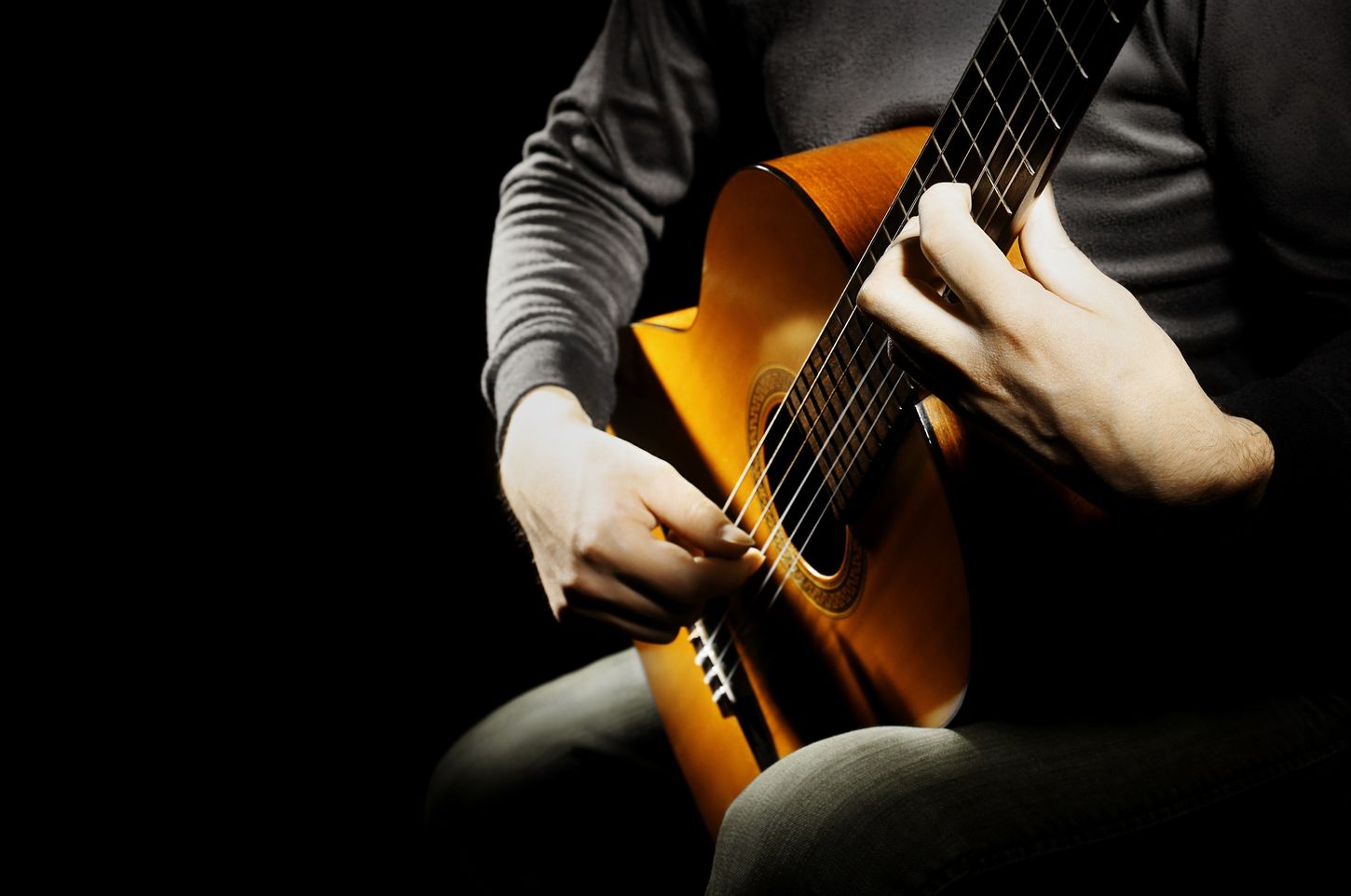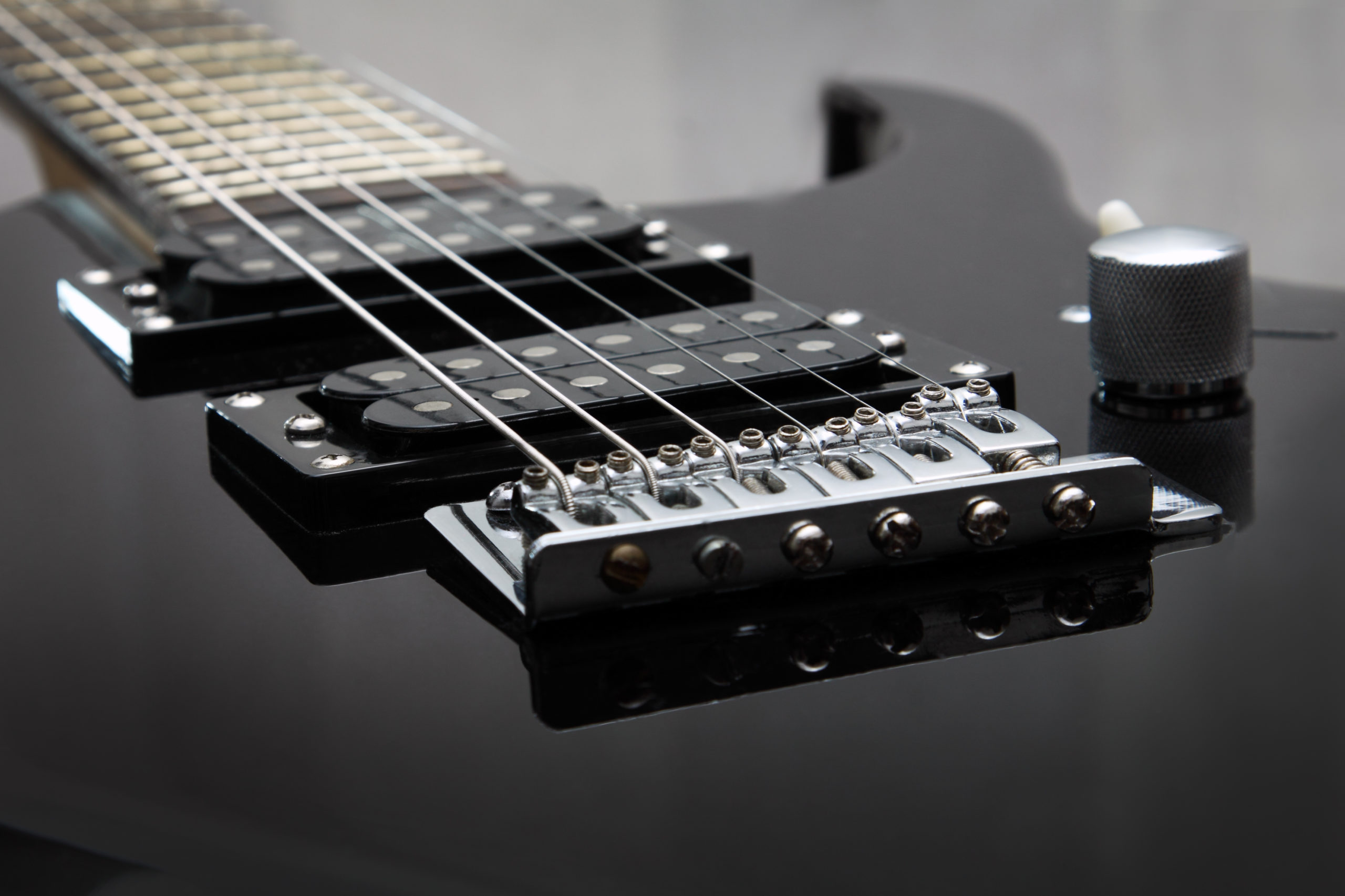Home>Instruments>Guitar>How Many Frets On A Guitar


Guitar
How Many Frets On A Guitar
Published: February 12, 2024
Discover the answer to the question "How many frets on a guitar" and learn about the different types of guitars and their fret counts. Find out everything you need to know about guitar frets.
(Many of the links in this article redirect to a specific reviewed product. Your purchase of these products through affiliate links helps to generate commission for AudioLover.com, at no extra cost. Learn more)
Table of Contents
Introduction
The Fascinating World of Guitar Frets
The guitar is a timeless instrument that has captured the hearts of music enthusiasts for generations. Its versatility, expressive capabilities, and rich history make it a beloved companion for musicians across various genres. When exploring the intricacies of this iconic instrument, one cannot overlook the significance of guitar frets. These small yet crucial components play a pivotal role in shaping the sound and playability of the guitar.
Guitar frets are not only functional but also possess an inherent aesthetic charm, adding character to the instrument's fretboard. Understanding the role and impact of frets on a guitar can deepen one's appreciation for the instrument and provide valuable insights for both aspiring and seasoned guitarists.
In this comprehensive guide, we will delve into the world of guitar frets, unraveling their fundamental significance, exploring variations in fret count, and shedding light on their impact on the overall playing experience. Whether you are a curious music enthusiast or an avid guitarist seeking to expand your knowledge, this exploration of guitar frets is sure to captivate and enlighten.
Basic Structure of a Guitar
Exploring the Anatomy of a Guitar
Before delving into the intricacies of guitar frets, it is essential to grasp the basic structure of this beloved instrument. A typical guitar comprises several key components, each contributing to its unique sound and playability. The main sections of a guitar include the body, neck, headstock, and fretboard.
The body of the guitar serves as the resonating chamber, amplifying the vibrations produced by the strings. It is often crafted from tonewoods such as spruce, mahogany, or cedar, each imparting distinct tonal characteristics to the instrument. The shape and size of the body can vary, with popular styles including dreadnought, concert, and parlor.
Connected to the body, the neck of the guitar plays a crucial role in supporting the fretboard and providing a stable platform for the strings. Typically crafted from durable woods such as maple or mahogany, the neck houses the truss rod, which allows for adjustments to the instrument’s neck relief, ensuring optimal playability.
At the end of the neck, the headstock houses the tuning pegs, enabling the guitarist to adjust the tension of the strings and tune the instrument to the desired pitches. The headstock also bears the guitar’s brand and often features intricate designs, adding a touch of visual elegance to the instrument.
Lastly, the fretboard, also known as the fingerboard, is affixed to the neck and serves as the surface over which the strings are pressed to produce different pitches. This is where the magic of guitar frets comes into play, significantly influencing the guitarist’s ability to create melodies, chords, and expressive musical phrases.
Understanding the fundamental structure of a guitar lays the groundwork for comprehending the pivotal role of guitar frets in shaping the instrument’s sonic and tactile characteristics. With this foundational knowledge in place, let’s embark on a captivating journey into the realm of guitar frets and their profound impact on the art of guitar playing.
Understanding Frets
Unveiling the Essence of Guitar Frets
At the heart of a guitar’s playability and tonal versatility lie the frets, which adorn the fretboard with precision and purpose. Frets are the thin metal strips embedded along the length of the fretboard, dividing it into distinct segments. Their primary function is to define the points at which the vibrating length of a string is shortened to produce specific pitches.
When a guitarist presses a string against a fret, it effectively alters the vibrating length of the string, resulting in a higher pitch. This mechanism allows for the creation of different notes and chords, forming the foundation of melodic and harmonic expression on the guitar.
The placement of frets along the fretboard is calibrated according to the principles of musical tuning and intonation. Through precise calculations and adjustments, luthiers and guitar manufacturers ensure that each fret corresponds to the correct pitch when the string is pressed against it. This meticulous calibration is essential for achieving accurate intonation and harmonious sound production across the entire fretboard.
Furthermore, the height and curvature of the frets significantly influence the playability of the guitar. Well-maintained and properly leveled frets contribute to a smooth and consistent feel, allowing for effortless string bending, chord transitions, and intricate fretting techniques. Conversely, worn or uneven frets can impede the guitarist’s dexterity and lead to intonation issues, necessitating fret maintenance and potential replacement.
Understanding the role of frets in altering string length, defining pitch, and shaping the tactile experience of playing the guitar is pivotal for musicians seeking to master the instrument. As we unravel the intricacies of guitar frets, we will gain a deeper appreciation for their multifaceted impact on the art of guitar playing and musical expression.
Standard Number of Frets on a Guitar
Exploring the Traditional Fret Configuration
Traditionally, guitars are equipped with a standard number of frets, which play a defining role in shaping the instrument’s sonic range and playability. The most prevalent configuration features 20 frets on the fretboard, providing ample room for musicians to explore a wide array of musical expressions and melodic sequences.
For acoustic guitars, the standard 20-fret configuration enables players to access four full octaves of musical notes, spanning from the open strings to the highest playable notes. This expansive range empowers guitarists to craft intricate melodies, execute complex chord progressions, and explore diverse musical genres with ease and precision.
Electric guitars, including solid-body and hollow-body models, commonly adhere to the 20-fret standard as well, offering consistent familiarity and playability across different guitar types. The 20-fret layout has become deeply ingrained in the fabric of guitar design, providing a harmonious balance between sonic versatility and ergonomic functionality.
It is important to note that certain guitar models, particularly those designed for specific playing styles or tonal characteristics, may deviate from the standard 20-fret configuration. For instance, extended-range guitars, such as 24-fret models, cater to musicians seeking access to higher pitches and expanded note ranges, facilitating virtuosic soloing and intricate musical passages.
While the 20-fret standard remains prevalent and widely embraced, it is essential for guitarists to explore and appreciate the nuances of different fret configurations, recognizing the impact of fret count on the instrument’s sonic capabilities and expressive potential. As we continue our exploration of guitar frets, we will delve into the variations in fret count and their implications for musicians seeking to push the boundaries of musical creativity and technical prowess.
Variations in Fret Count
Exploring Diverse Fret Configurations
While the standard 20-fret configuration serves as a foundational template for many guitars, variations in fret count offer intriguing possibilities for musicians seeking expanded sonic palettes and enhanced playability. One notable deviation from the traditional 20-fret layout is the inclusion of 22 frets, which has gained popularity among guitarists seeking access to higher pitches without compromising the instrument’s familiar feel and ergonomic design.
Guitars featuring 22 frets extend the playable range, providing additional notes that can enrich melodic compositions and facilitate seamless transitions between octaves. This expanded range is particularly valued by lead guitarists and soloists who prioritize access to higher register notes for expressive soloing and intricate musical passages.
Furthermore, certain electric guitar models, especially those tailored for shredding and technical virtuosity, boast an impressive 24-fret configuration. The inclusion of 24 frets empowers guitarists to explore the upper reaches of the instrument’s sonic spectrum, enabling blistering runs, lightning-fast arpeggios, and fluid note articulation across an extensive range of pitches.
Extended-range guitars, such as 7-string and 8-string models, often feature even more extensive fretboards, accommodating the additional strings with fret counts reaching 24 or beyond. These instruments cater to the demands of modern metal, progressive rock, and fusion genres, where extended range and expanded tonal possibilities are highly sought after.
It’s important to recognize that the choice of fret count is not merely a matter of numerical variation but a deliberate decision that influences the instrument’s sonic character and the guitarist’s creative potential. Whether embracing the traditional 20 frets, venturing into the realm of 22 or 24 frets, or exploring the frontiers of extended-range guitars, each fret configuration offers a distinct sonic landscape for musicians to navigate and explore.
By understanding the implications of different fret counts, guitarists can align their instrument choices with their musical aspirations, harnessing the power of fretboard configuration to unlock new dimensions of artistic expression and technical proficiency.
Conclusion
Embracing the Fretted Journey
As we conclude our immersive exploration of guitar frets, we emerge with a profound appreciation for these unassuming yet indispensable components that shape the very essence of the instrument. From the fundamental role of frets in altering string length and defining pitch to the diverse configurations that expand the sonic horizons of the guitar, our journey has unveiled the intricacies and significance of fretted expression.
The standard 20-fret configuration, a cornerstone of traditional guitar design, offers a familiar landscape for musicians to craft melodies, chords, and emotive musical narratives. Its prevalence across acoustic and electric guitars underscores its enduring relevance and ergonomic appeal, providing a harmonious balance between sonic versatility and playability.
However, our exploration has also illuminated the captivating variations in fret count, from the nuanced addition of 22 frets to the exhilarating possibilities presented by 24-fret and extended-range guitars. These configurations cater to diverse musical styles and technical demands, empowering guitarists to traverse expansive sonic territories and unleash their creative potential with unwavering precision.
Ultimately, the world of guitar frets transcends numerical distinctions, inviting musicians to embrace the tactile nuances and sonic intricacies that define their artistic journey. Whether navigating the familiar terrain of the 20-fret landscape or venturing into uncharted fretboard territories, guitarists are poised to embark on a fretted odyssey that resonates with boundless creativity and expressive fervor.
As we bid adieu to this exploration, let us carry forth a newfound reverence for the humble yet transformative nature of guitar frets, recognizing their pivotal role in shaping the melodic tapestries and harmonic resonances that define the art of guitar playing. May every note and chord reverberate with the essence of fretted ingenuity, weaving a symphony of boundless musical possibilities for generations to come.











